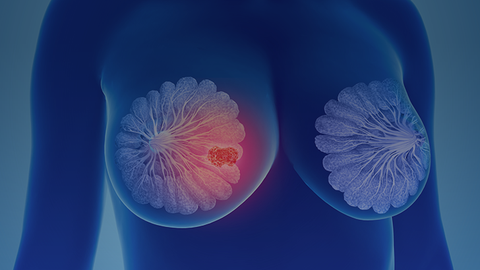Announcer:
Welcome to CME on ReachMD. This episode is part of our MinuteCE curriculum.
Prior to beginning the activity, please be sure to review the faculty and commercial support disclosure statements as well as the learning objectives.
Dr. Tolaney:
Hi. My name is Sara Tolaney. I'm a Breast Medical Oncologist at Dana Farber Cancer Institute. And today we're going to be talking about targets for antibody drug conjugates, and whether or not positivity of the target really matters.
So we've seen that there have now been at least two antibody drug conjugates that have been approved for the treatment of metastatic triple-negative breast cancer, including one that's targeting HER2 and another one that's targeting TROP2. And certainly, a question that arises is: does the level of target expression predict benefit to therapy? And so, if we think about sacituzumab govitecan, an antibody drug conjugate that is targeting TROP2, we've certainly seen that it performs better than chemotherapy when analyzed in a randomized trial in the ASCENT study. But one question that arose is: what if we looked at TROP2 expression, how would that predict benefit to treatment? And what we saw is that when you looked back and TROP2 expression by immunohistochemistry, and bucketed it into high, medium, and low sacituzumab outperformed chemotherapy, irrespective of TROP2 status, even within the low expressors, suggesting you don't really need to test for TROP2 to predict which patients are going to do better with sacituzumab compare it to chemotherapy.
We saw this also in TROPiCS-02 in the hormone receptor-positive setting where similarly even in the very low TROP2 expressors, sacituzumab outperformed chemotherapy.
What about for HER2 targeted ADCs? We also know that testing for HER2 and establishing HER2-low status is a little bit complicated. We've defined HER2-low to be IHC 1+ or 2+ and not FISH amplified. But it has been challenging for pathologists to discern 1+ versus IHC-0, which is really quite critical for us to understand which patients are benefiting from treatment. In this analysis, you can see that there's only a 26% concordance in pathologists differentiating 0 and 1+ staining.
I think the other challenge that we face is does target expression even matter when thinking about benefits to T-DXd? Because we've seen data from the DAISY study, suggesting that even in the HER2-0 patients, there was about a 30% response rate within this group. And we're going to see further data emerge from the DESTINY-Breast06 study, which will look at those ultralow expressors. So those patients who have somewhere between a 0 and 1+ level of staining, which were included in DESTINY-Breast06, and so I think more to come for us to better understand if target level expression really does matter for prediction of benefit to T-DXd.
So I think at this time, there is no indication to test patients for TROP2 to know if they're going to benefit from sacituzumab govitecan since benefit was seen irrespective of TROP2 expression level. And with regards to T-DXd, at this point in time, the agent is approved for HER2-low, so 1+ or 2+ and not FISH amplified. But we do need more data here because HER2-low is a tough biomarker. It's dynamic, it's not stable. And we're going to have to see if quantitative expression of HER2 is going to help us better understand which patients benefit. So I think more information is needed here.
Thank you so much.
Announcer:
You have been listening to CME on ReachMD. This activity is jointly provided by Global Learning Collaborative (GLC) and TotalCME, LLC. and is part of our MinuteCE curriculum.
To receive your free CME credit, or to download this activity, go to ReachMD.com/CME. Thank you for listening.


 In support of improving patient care, this activity has been planned and implemented by Global Learning Collaborative (GLC) and Total CME, LLC. GLC is jointly accredited by the American Council for Continuing Medical Education (ACCME), the Accreditation Council for Pharmacy Education (ACPE), and the American Nurses Credentialing Center (ANCC) to provide continuing education for the healthcare team.
In support of improving patient care, this activity has been planned and implemented by Global Learning Collaborative (GLC) and Total CME, LLC. GLC is jointly accredited by the American Council for Continuing Medical Education (ACCME), the Accreditation Council for Pharmacy Education (ACPE), and the American Nurses Credentialing Center (ANCC) to provide continuing education for the healthcare team.

Facebook Comments